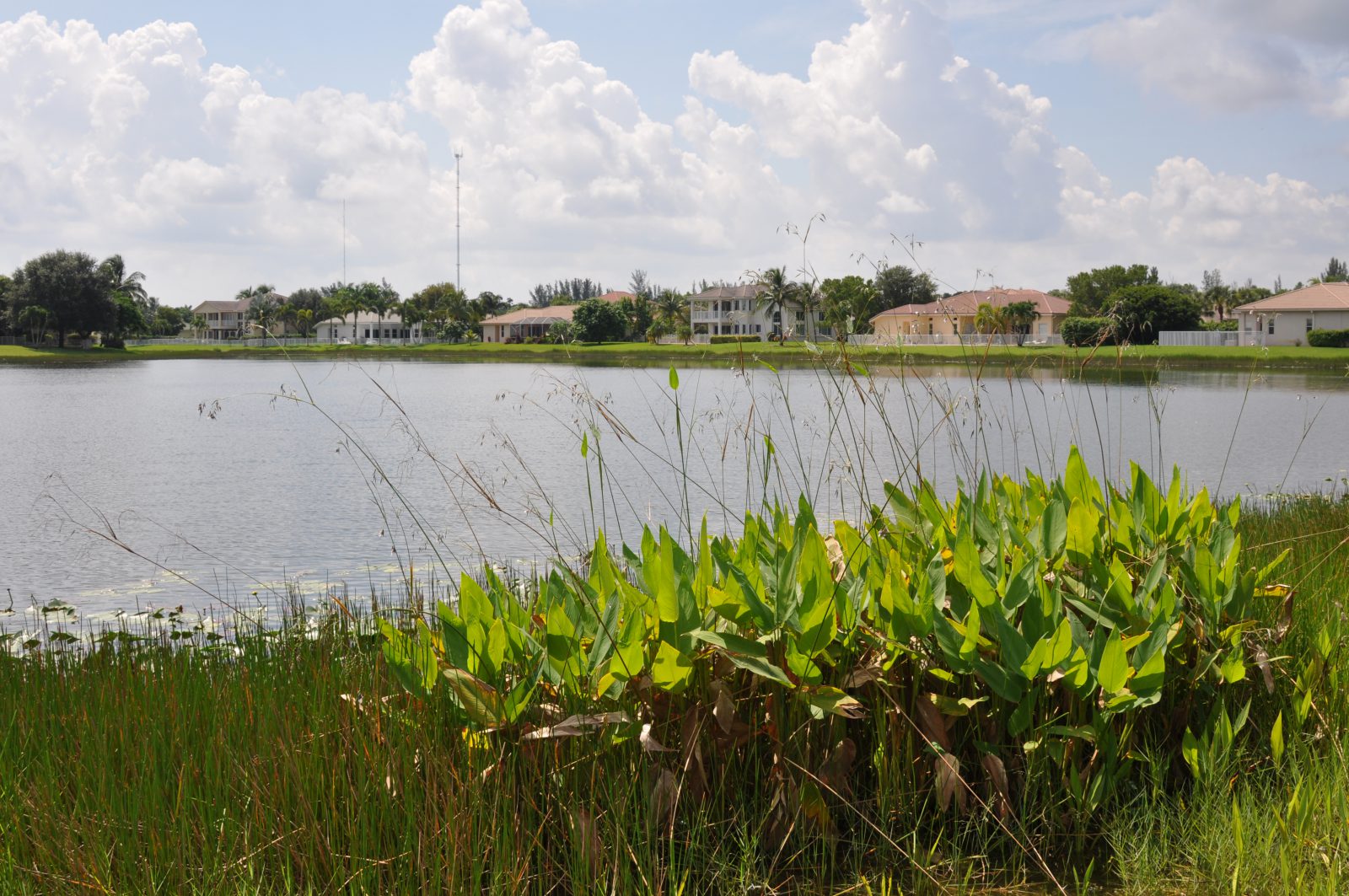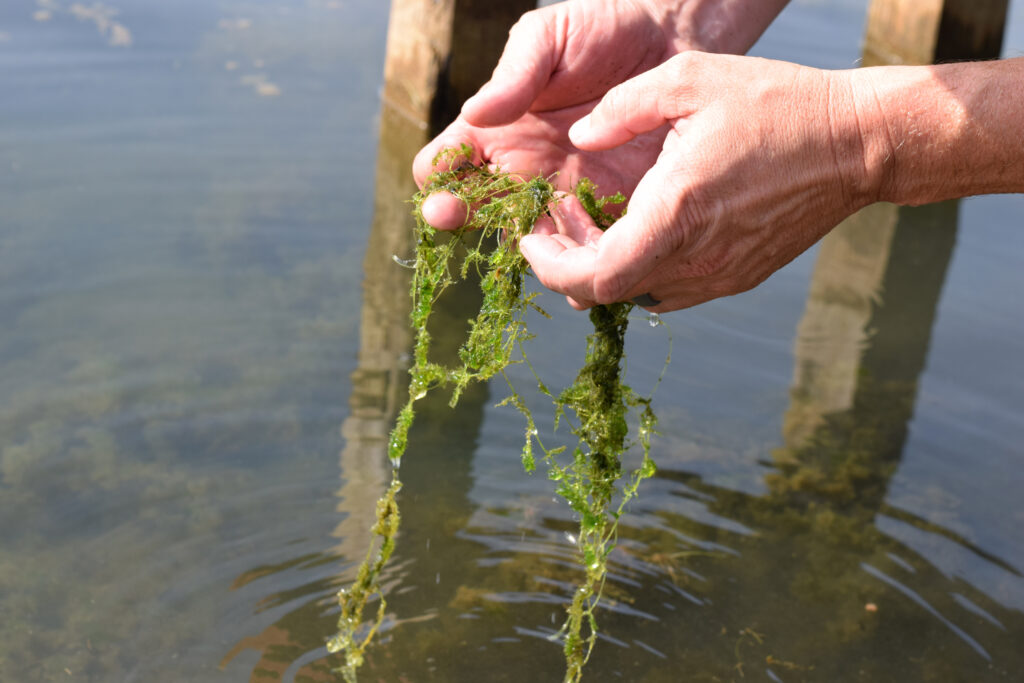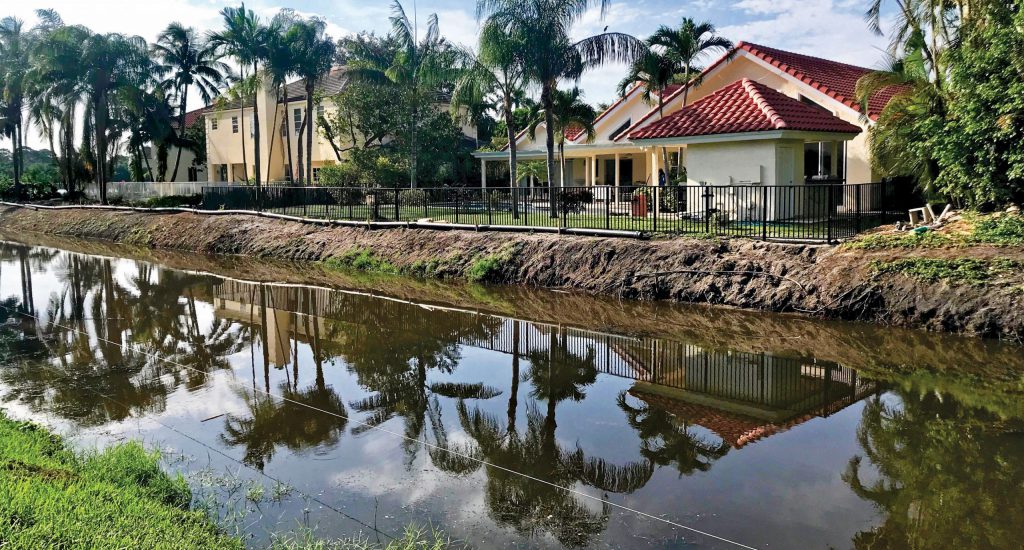
Do You Need to Refresh Your Pond Management Program? Here Are 4 Signs It Needs Updating.
Maintaining healthy lakes and stormwater ponds is crucial for environmental sustainability and the well-being of the public. These waterbodies play an important role in managing stormwater runoff, promoting recreation, and enhancing the aesthetic appeal of properties. However, like any other aspect of property management, lake and stormwater pond management programs can become outdated or ineffective over time. If your waterbody is experiencing signs of decline, it might be time to rethink your management approach.
Here are four signs that your lake or pond management program should be evaluated:
1. You Have Pond Weeds and Algae Growing
Algae and weeds are some of the most common visual issues identified on lakes and ponds, but they are a symptom of poor water quality. Water quality problems can have detrimental effects on aquatic life and pose health risks to the surrounding community. If you notice increased levels of nuisance weeds and toxin-producing harmful algal blooms, as well as pond scum, foul odors, or water discoloration, it’s essential to take corrective action.
Prevent Potential Water Quality Issues with Proactive Solutions
Thorough water quality assessments can help reveal potential imbalances and determine if new solutions such as aeration, nutrient remediation, or biological bacteria are necessary to restore balance. Professionals will also work to identify external contributing factors. Increased use of high-phosphorus lawn fertilizers or the installation of a new dog park—a notable source of nutrient-rich animal waste—can significantly impact water quality.
2. Your Pond Floods Frequently
Stormwater ponds are specifically constructed to manage water during heavy rainfall to prevent flooding and filter pollutants from runoff. If your waterbody is consistently failing to function as designed, it could be due to equipment damage or clogged intake or output structures. Frequent flooding not only poses risks to surrounding assets, but also exacerbates shoreline erosion issues and can damage surrounding infrastructure. Furthermore, if you’re managing a pond within a community, it could fall out of compliance with local stormwater regulations, leading to potential fines or legal issues.
Address Sediment Accumulation to Improve Pond Functionality
While it’s normal for a stormwater pond to accumulate sediment, yard debris, and other organic material that reduces its water-holding capacity over many years, sudden changes may be connected to new factors such as nearby construction projects or changes in landscaping practices. Mechanical hydro-raking is an excellent solution to physically remove build-up in target areas. Professionals may also recommend ongoing bathymetric mapping studies to track the rate of sedimentation over time and project when dredging may be needed to restore the waterbody to its original depth.
3. Your Shoreline Has Erosion Damage and Vegetation Loss
Healthy lakes and ponds rely on stable shorelines with robust vegetation to prevent erosion and provide essential habitat for wildlife. If you observe sudden signs of erosion, loss of vegetation, or unstable banks, it could indicate that an invasive weed like phragmites is crowding out native vegetation or that an invasive animal is burrowing into the delicate shoreline. Rapidly occurring shoreline erosion problems could also be attributed to increased recreational activity around the perimeter or more frequent storms and hurricanes.
Repair Erosion Damage and Establish A Native Shoreline Buffer
Revising shoreline management practices can help address these issues. These may include establishing a vegetative buffer of native plants, monitoring and physically removing invasive species, or applying highly targeted EPA-registered herbicides to maintain plant diversity. Severely deteriorated shorelines can be restored using bioengineering techniques that reshape and anchor sediment and soil in place.
4. Stakeholders Are Dissatisfied
Whether you manage a residential pond, public lake, or private waterbody, there are always stakeholders who rely on the waterbody for one thing or another. Feedback and satisfaction from citizens, residents, or family and friends are indicators of the success of your lake and stormwater pond management program. If stakeholders express concerns about safety or aesthetics or simply want new ways to enjoy their waterbody, it may be time to revisit your management approach, whether that includes introducing fountains and aerators, removing floating vegetation with a mechanical harvester, or designing a fish stocking program.
A freshwater partner can help stakeholders engage with their stakeholders through outreach programs, surveys, and public meetings to gather feedback and address their concerns effectively.
Stay Ahead of Potential Issues with Proactive Lake and Pond Management
Successful lake and stormwater pond management programs are essential for preserving these valuable assets and protecting the infrastructure and well-being of those who rely on clean, healthy water. When signs such as declining water quality, frequent flooding, regulatory non-compliance, erosion, and stakeholder dissatisfaction become apparent, it’s time to rethink and update your management approach.
Through an Annual Management Program, stakeholders work directly with an Aquatic Specialist to conduct regular water quality testing and physical monitoring, allowing them to identify potential issues early on and pivot management approaches as needed. In addition to helping save funds and resources in the long term, ongoing management programs can provide peace of mind, allowing stakeholders to enjoy their waterbodies with the knowledge that they’re receiving consistent professional attention and care.
Enhance Your Water with Expert Care
Contact Us to Improve Your Management Program
Call us at 888-480-5253 or complete the form below to connect with an aquatic management expert.
SOLitude Lake Management is a nationwide environmental firm committed to providing sustainable solutions that improve water quality, enhance beauty and preserve natural resources.
SOLitude’s team of aquatic scientists specializes in the development and execution of customized lake, stormwater pond, wetland and fisheries management programs. Services include water quality testing and restoration, algae and aquatic weed control, installation and maintenance of fountains and aeration systems, shoreline erosion control, muck and sediment removal and invasive species management. SOLitude partners with homeowners associations, golf courses, private landowners, businesses and municipalities. SOLitude Lake Management is part of Rentokil, a leading business services company, operating across the United States, Canada and Puerto Rico.
For more information, visit SOLitude Lake Management at solitudelakemanagement.com, and connect on Facebook, LinkedIn and Twitter.













